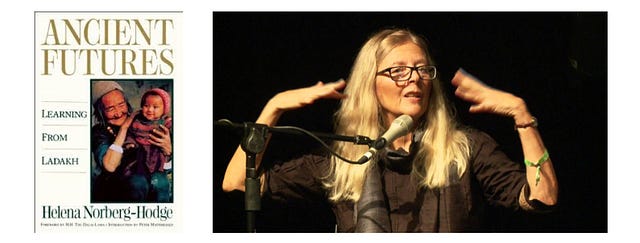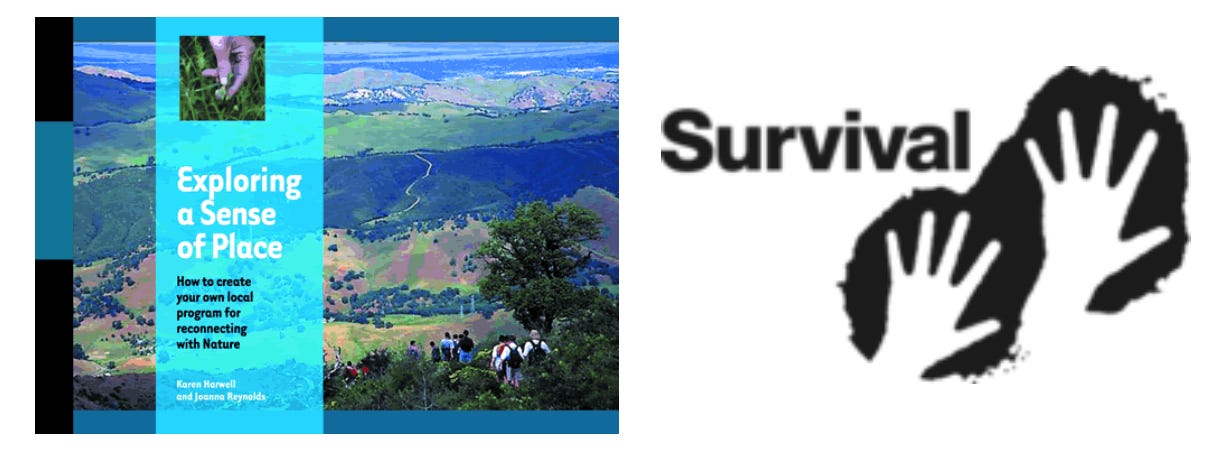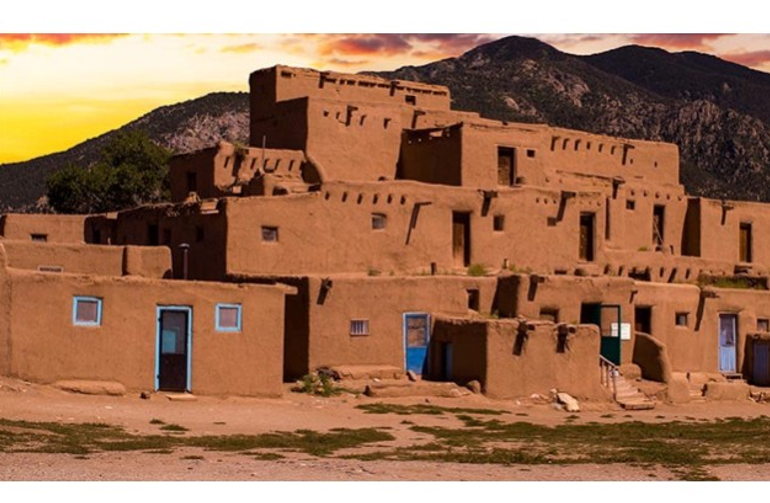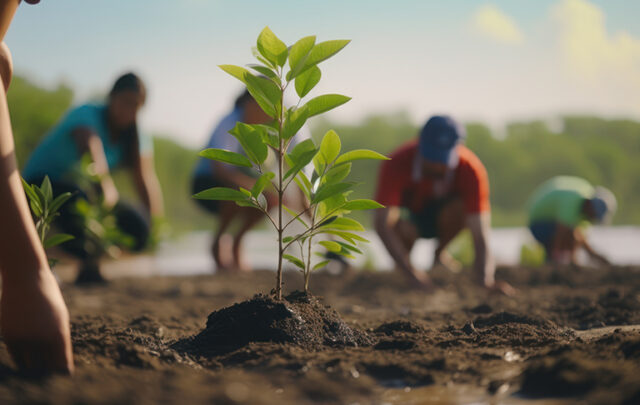“The modern mind-set must integrate understanding of Indigenous peoples’ traditional relationship with the land in order to achieve long-term sustainability, not only for Native communities, but for everyone everywhere … Implied here is the essence of the conflict between worldviews: non-anthropocentric (Indigenous) versus anthropocentric (Western industrial). The former is grounded on the interconnectedness of humans with the land and natural forces in general, as well as with all other living creatures. In contrast, the latter tends to separate living creatures and nonorganic matter into hierarchies with humans at the centre or pinnacle of all.”— Gregory Cajete (1999)
There are many historical and modern day examples of how human beings, all over the world, have managed to meet the needs of locally adapted, place-based communities within the limits of their local environment. Many traditional cultures prove that it is possible to sustain locally adapted, place-based communities for centuries and even millennia through prudent and ecologically and socially responsible resource management and sustainable ways to meet human needs within the limits and opportunities set by the natural conditions of their particular region.
Such ecologically conscious resource management and design practices have been employed by locally adapted cultures found on most continents. Traditional sustainable land management can be found in Asia, Europe, Africa, Australia and the Americas.
 Helena Norberg-Hodge is an analyst of the impact of the global economy on cultures and agriculture worldwide, a pioneer of the localisation movement, and the articulator of the core ideas of Counter-development. She is the founder and director of the International Society for Ecology and Culture (ISEC); (Image left, image right)
Helena Norberg-Hodge is an analyst of the impact of the global economy on cultures and agriculture worldwide, a pioneer of the localisation movement, and the articulator of the core ideas of Counter-development. She is the founder and director of the International Society for Ecology and Culture (ISEC); (Image left, image right)
Professor Gregory Cajete, of the Tewa tribe explains how, for Native people throughout the Americas, the relationship between humanity and nature was not one of separation but of participation. Human culture was the human expression of the local environment. While the actual terms and concepts like ‘ecology’ and ‘design’ are admittedly part of the Western intellectual tradition, it is nevertheless evident that Native people had, and to some extent still have, a tradition of ecologically conscious design. Their design of artefacts and their patterns of production and consumption are aimed at appropriate participation in natural process and the maintenance of a healthy community within a healthy ecosystem.

The Tewa are a linguistic group of Pueblo American Indians who speak the Tewa language and share the Pueblo culture. Their homelands are on or near the Rio Grande in New Mexico north of Santa Fe; Gregory Cajete is professor in native american studies at the University of New Mexico (image left; image right)
“The environment was not separate or divorced from Native peoples’ lives, but rather was the context or set of relationships that tied everything together. They understood ecology not as something apart from themselves or outside their intellectual reality, but rather as the very centre and generator of self-understanding. As a centre, that environmental understanding became the guiding mechanism for the ways in which they expressed themselves and their sense of sacredness.”— Gregory Cajete (1999, p.6).
By ignoring the wisdom contained in traditional cultures of appropriate participation, humanity is trading the fleeting experience of possessing power over nature (in the form of modern science and technology) for the collective treasure of our ancestral wisdom of appropriate participation in nature. The diverse cultural, indigenous traditions of the world hold crucial knowledge of specific conditions of places over time, knowledge reflecting changes in the environmental variables of a particular place and of appropriate local adaptations to those changes.
Christopher Day rightly points out: “Culture, though bounded with place, is handed down through living continuity. If generational links are broken, traditional practices no longer seem relevant” (Day, 2002, p.148). This is the great danger inherent in the loss of traditional knowledge and social community cohesion everywhere in the world.
“In a sense, ecological design is really just the unfolding of place through the hearts and minds of its inhabitants. It embraces the realization that needs can be met in the potentialities of the landscape and the skills already present in the community. Sustainability is embedded in processes that occur over very long periods of time and are not always visually obvious. … Without local knowledge, places erode.”— Sim van der Ryn & Stuart Cowan, 1996
Traditional cultures all over the world, guided by worldviews that integrated them into nature and made them ecologically conscious, have co-evolved a wealth of knowledge and practical ways of appropriate participation in natural process that are delicately matched to their local environment. Not only our long-term sustainability as a species, but our wellbeing as individuals and communities depends on reconnecting with and developing a new such a deep sense of place.

Sim van der Ryn puts its beautifully: “At the heart of ecological design is not efficiency or sustainability. It is the embodiment of animating spirit, the soul of the living world as embodied in each of us waiting to be reborn and expressed in what we design” (Sim Van der Ryn, 2012), or in the words of John Todd: “Ecological design is elegant solutions predicated by the uniqueness of place.”

Exploring a Sense of Place guidebook will inspire you and give you all the practical tools you need to design, develop, organize, and produce an Exploring a Sense of Place program specific to your bioregion; Survival is an organization working for tribal peoples’ rights worldwide. (image left; image right)
The First in a series of short films by Max Smith, providing viewers with a window into natural habitats found in the UK through the use of cinematography. (Friends of the Earth, UK)
Note: This is an excerpt from the Worldview Dimension of Gaia Education’s online course in Design for Sustainability. In 2012 I was asked to rewrite this dimension as part of a collaboration between Gaia Education and the Open University of Catalunya (UOC) and in 2016 I revised it again into this current version. The next opportunity to join the course is with the start of the Worldview Dimension on May 21st, 2018. You might also enjoy my book ‘Designing Regenerative Cultures’.





